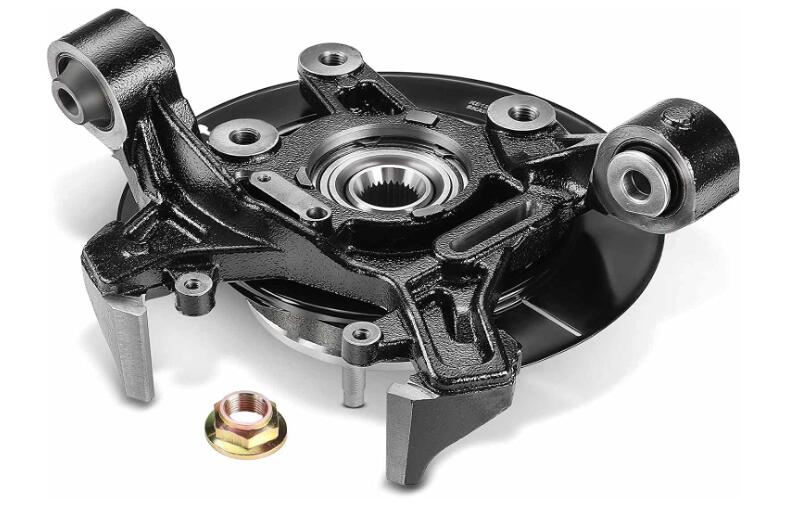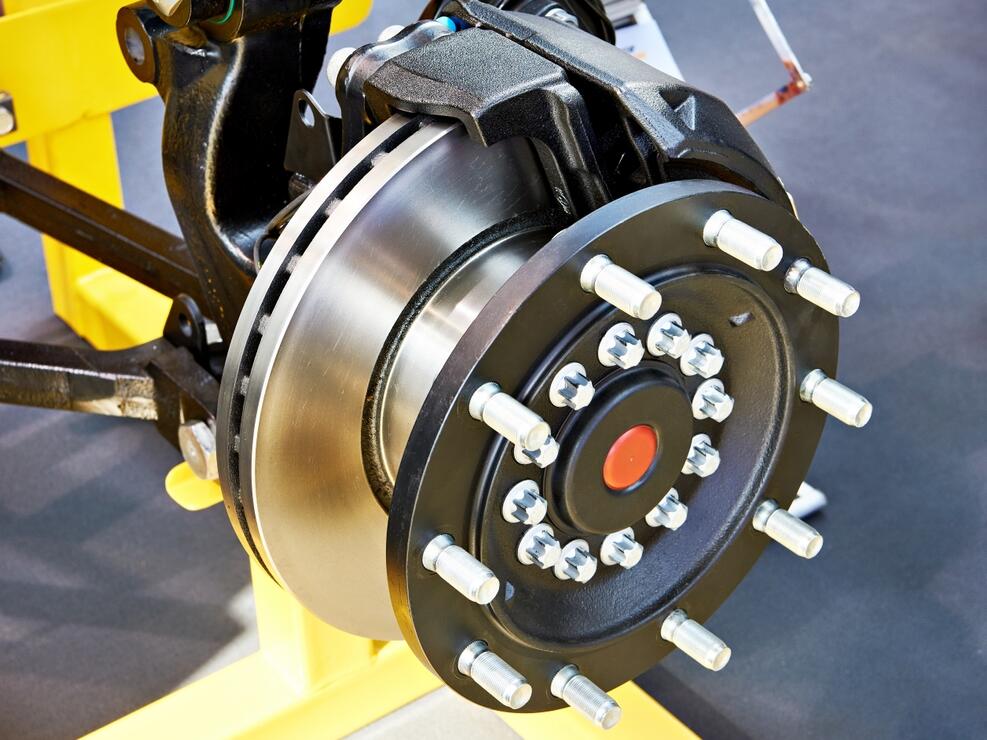Introduction
Wheel hub grease plays a vital role in keeping the wheel bearings of a vehicle functioning optimally, minimizing friction, and ensuring longevity.
It’s a critical component that often goes unnoticed but can substantially impact a vehicle’s performance and safety.
This blog aims to provide an in-depth look at wheel hub grease, its types, uses, and how we, as a manufacturer, approach its production.
Understanding Wheel Hub Grease
At its core, wheel hub grease is a lubricant, a substance that creates a layer between two surfaces, reducing friction and wear.
This lubricant is formulated with a base oil and a thickening agent, often combined with various additives to enhance its properties.
Its purpose is to ensure that the wheel bearings, a critical component in a vehicle’s wheel assembly, can rotate smoothly and withstand driving pressures.
Different types of grease have unique characteristics, making them suitable for specific applications.
In-wheel hubs, grease needs to have excellent high-temperature stability, good water resistance, and the ability to handle the heavy loads and high speeds typical in a car’s wheel hub.
Types of Wheel Hub Grease
Several types of grease can be used in wheel hub assemblies, each with its own set of properties that make it suitable for different conditions and applications.
Lithium Grease: Lithium-based greases are standard due to their superior high-temperature stability and resistance to water. They can also withstand heavy loads, making them suitable for wheel bearings.
Calcium Grease: Calcium greases are known for their excellent water resistance. They perform well in wet environments, making them suitable for vehicles operating in damp or humid conditions.
Polyurea Grease: Polyurea greases offer excellent high-temperature performance and good water resistance. They are particularly suitable for high-speed wheel bearings.
Sodium Grease: Sodium-based greases are less common for wheel bearings due to their poor water resistance but offer good high-temperature stability.
Choosing the Right Wheel Hub Grease
When selecting the proper wheel hub grease, several factors come into play.
The driving environment, the type of vehicle, and the specific requirements of the wheel hub assembly all need to be considered.
For instance, a car that often drives through water or in wet conditions might benefit from grease with high water resistance, like calcium-based grease.
On the other hand, a vehicle subjected to high-speed operation might require grease with excellent high-temperature stability, such as polyurea-based grease.
It’s essential to remember that not all greases are interchangeable, and using the wrong type can lead to premature bearing failure or other issues.
As a rule of thumb, always follow the vehicle manufacturer’s recommendation when choosing wheel hub grease.
The Manufacturer’s Perspective on Wheel Hub Grease
As a manufacturer of automotive wheel hub assemblies, we highly emphasize the type of grease used in our products.
Our choice of grease directly impacts our assemblies’ performance, durability, and safety.
We work closely with lubricant manufacturers to understand the properties of their products and how they perform under different conditions.
Through rigorous testing, we ensure that the grease used in our wheel hubs can withstand the stresses of real-world driving conditions and maintain its performance over a long lifespan.
In our experience, high-quality wheel hub grease contributes significantly to the overall reliability of the wheel hub assembly.
It helps protect the bearings from wear and tear, reduces maintenance needs, and extends the assembly’s lifespan.
We’ll explore this topic further in the next section, delving deeper into wheel hub grease production and testing processes and understanding future trends.
Production and Testing of Wheel Hub Grease
As a manufacturer, we must comprehend the types of wheel hub grease and the intricacies involved in their production and testing.
The manufacturing process for wheel hub grease begins with selecting a base oil, which is then mixed with a thickening agent to create a semi-solid lubricant.
Additives are introduced into this mix to enhance specific properties, such as anti-oxidation, anti-wear, and water resistance.
The production process requires a high degree of precision and quality control.
Every batch of grease produced must undergo rigorous testing to ensure it meets the necessary performance standards.
These tests measure the grease’s viscosity, ability to withstand high temperatures, water resistance, and several other critical properties.
Our company works closely with our grease suppliers to ensure that each batch meets our stringent quality standards.
We conduct our tests, focusing specifically on the performance of the grease under the conditions that our wheel hub assemblies are likely to encounter in the real world.
This two-pronged approach to testing – by both the grease manufacturer and us – ensures that our products perform consistently and reliably.
The Importance of Proper Grease Application
Another vital aspect that we want to emphasize is the importance of proper grease application in the wheel hub assembly.
It’s not just about using the appropriate grease; it’s also about applying it correctly.
Too much grease can cause excessive heat due to higher friction, while too little grease might not provide enough lubrication for the bearings.
Thus, it’s a delicate balance that needs to be maintained for optimal performance.
As manufacturers, we apply grease in controlled conditions, ensuring the correct quantity and even distribution.
However, during maintenance or part replacement, mechanics and vehicle owners must follow the manufacturer’s guidelines for grease application.
Future Trends in Wheel Hub Grease
Looking towards the future, we’re excited about the developments happening in the field of lubrication technology.
New types of synthetic greases are being developed that offer superior performance over their conventional counterparts.
These advanced greases promise better high-temperature stability, improved water resistance, and longer life, benefiting the wheel hub assemblies’ longevity and performance.
Additionally, there’s a growing emphasis on creating environmentally friendly greases.
Biodegradable and low-toxicity greases are starting to enter the market, aligning with the broader automotive industry’s shift towards sustainability.
Grease Compatibility and the Role of Manufacturers
When discussing wheel hub grease, we must consider its compatibility with other greases.
Different types of greases, depending on their thickening agents, may not be compatible with each other.
Mixing incompatible greases can result in changes to their properties and adversely affect their performance. In worst-case scenarios, this can lead to premature failure of the wheel hub assembly.
As manufacturers, we greatly emphasize educating our customers about this issue.
Our user manuals include detailed information about the grease used in our wheel hub assemblies and clear warnings against mixing it with incompatible greases.
We also provide comprehensive customer support to address any doubts or questions vehicle owners or mechanics may have regarding this subject.
The Future Role of Manufacturers in Advancing Wheel Hub Grease Technologies
As a wheel hub assembly manufacturer, our role continues beyond simply utilizing the right kind of grease in our products.
We are continually involved in research and development efforts, working alongside our suppliers and independent research institutions to push the boundaries of lubrication technology.
Our involvement in these efforts is twofold.
Firstly, we are often the first to test new types of greases, evaluating their performance in real-world conditions.
This allows us to provide feedback to grease manufacturers and helps refine and improve these products before they hit the market.
Secondly, our ongoing research helps us better understand the evolving needs of modern vehicles and adapt our products accordingly.
The automotive industry is shifting towards electric vehicles with different requirements than traditional combustion engines.
We’re actively exploring new types of greases suitable for these vehicles and their unique challenges.
Innovation in Grease Technologies: Manufacturer’s Perspective
The progress in automotive engineering continues, and our aspirations as a hub assembly manufacturer.
The automotive industry, globally, is experiencing a dynamic shift.
The move towards electric vehicles (EVs) redefines how we approach design and maintenance, including the components that make up the wheel hub assembly.
Specifically, the requirements of EVs for wheel hub grease are distinct from traditional combustion engine vehicles.
The demand for high-speed performance, coupled with EVs’ unique heat signatures and stress patterns, means that more than the grease formulations of the past may be required.
As manufacturers, we’re facing this challenge head-on.
We’re collaborating with lubricant manufacturers to research and test new types of greases specifically formulated for electric vehicles.
Our research and development teams are investing countless hours into trying these new formulations under various conditions.
The goal is to ensure our wheel hub assemblies not only meet but exceed the performance, safety, and durability standards of this new era of automotive transport.
Customer Education and Market Evolution
Aside from developing and integrating cutting-edge lubricants into our products, we also recognize the importance of educating our consumers about these developments.
A well-informed customer is empowered when dealing with components as critical as wheel hub assemblies.
To this end, we’ve redoubled our efforts to provide clear and comprehensive information to our customers.
Whether through our manuals, customer service, or online platforms, we’re constantly communicating the importance of correct grease usage and the exciting developments in grease technologies.
Conclusion
The realm of wheel hub grease is indeed a complex one.
However, as manufacturers, our deep involvement in this field allows us to contribute positively to its advancement.
We continue to invest in research and development, ensuring our products stay ahead of the curve and meet the evolving needs of the automotive landscape.
While our mission is to deliver top-quality products to our customers, we also believe in the importance of customer education.
In this regard, we commit ourselves to serve as a reliable source of information, helping customers make informed decisions.
After all, a high-performing, durable wheel hub assembly is a collective achievement—a product of top-tier manufacturing, cutting-edge technology, and well-informed usage and maintenance.




